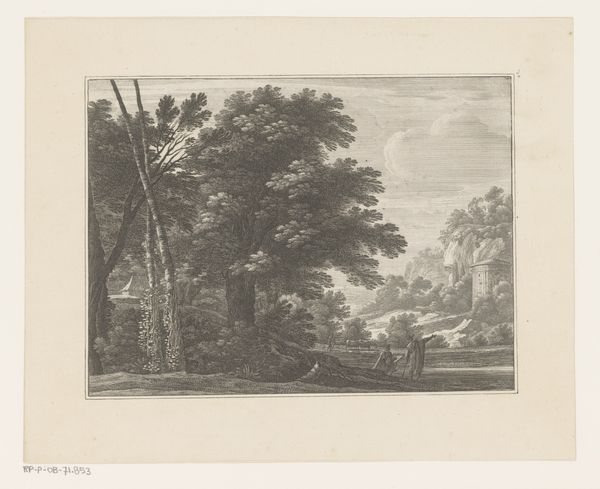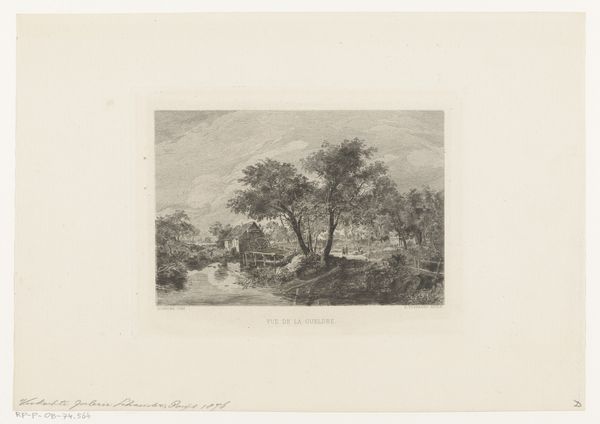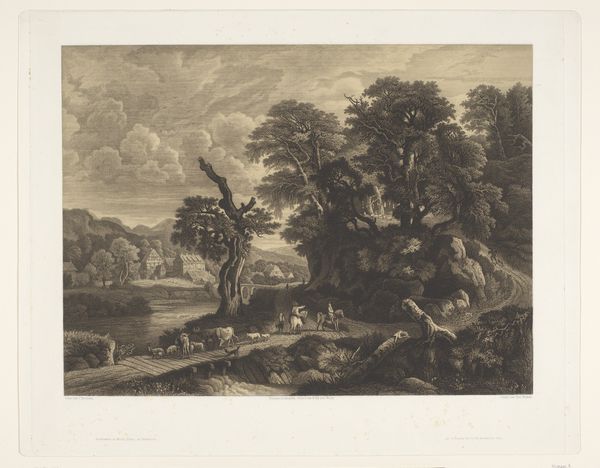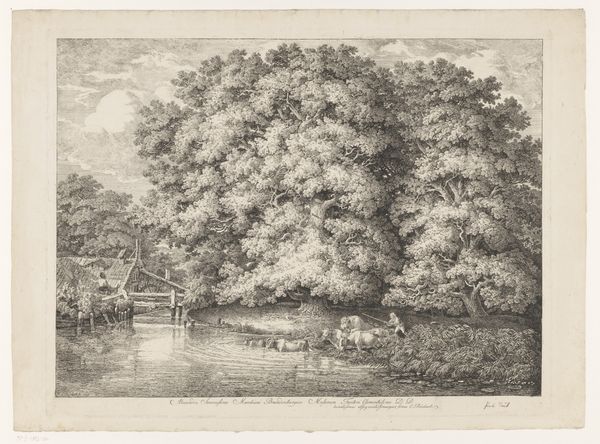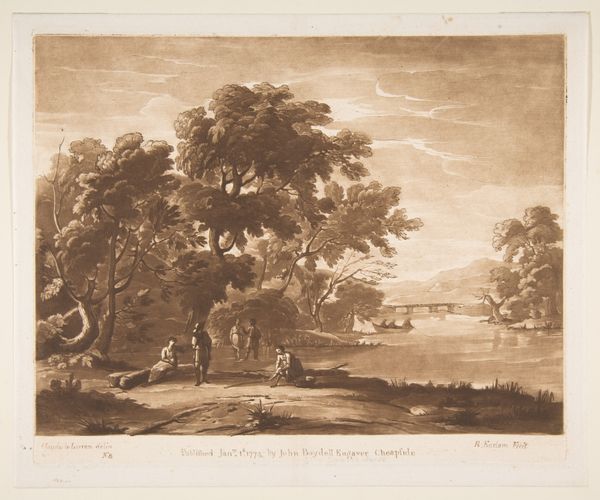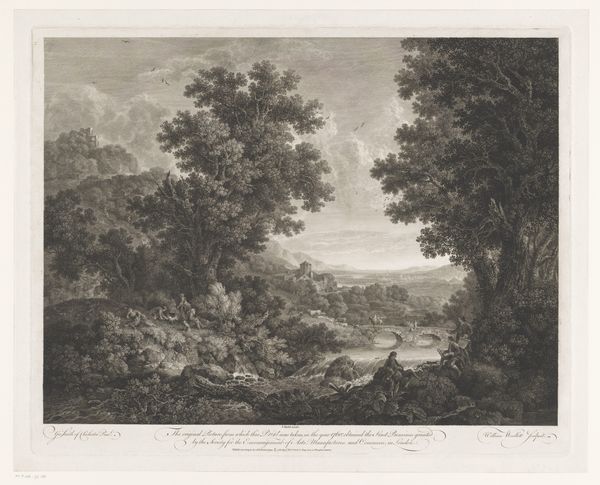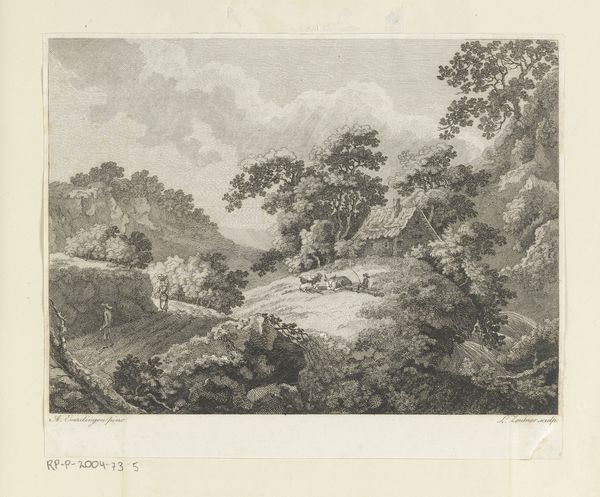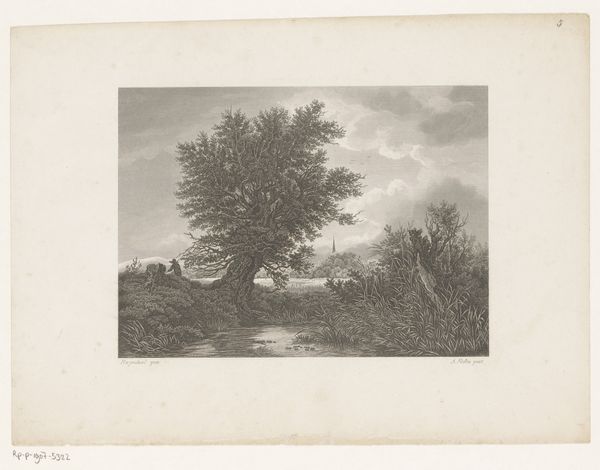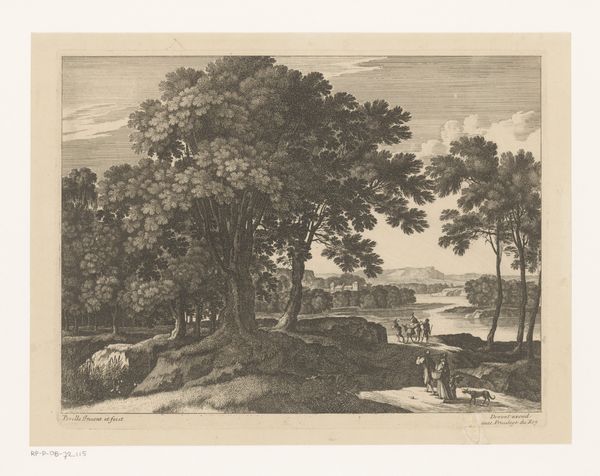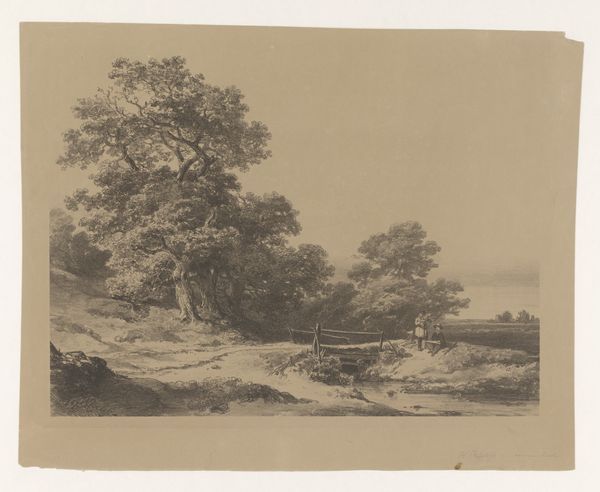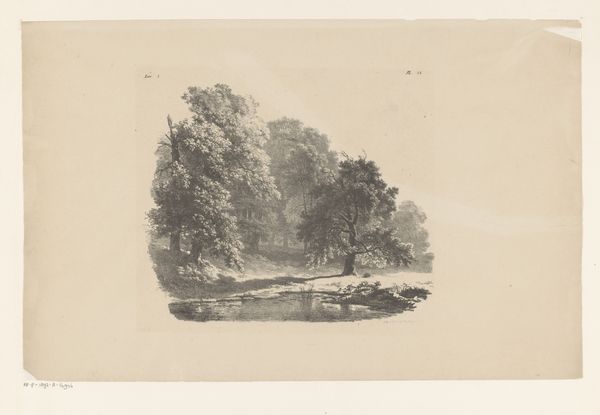
print, etching
#
16_19th-century
# print
#
etching
#
landscape
#
realism
Dimensions: height 444 mm, width 543 mm
Copyright: Rijks Museum: Open Domain
Editor: We're looking at "Landscape with Oaks Along a Brook," an etching from somewhere between 1833 and 1883, by Auguste Numans. It has such a quiet, almost serene quality. What captures your attention in this piece? Curator: Well, let’s consider the landscape tradition in 19th-century art. The rise of Realism coincides with industrialization. How do you think an image like this participates in contemporary social dialogues of the period? Editor: I guess it presents a contrasting view? While cities became these centers of industry and change, this etching offers an idealized image of the countryside. It’s like a nostalgic look back. Curator: Exactly. Landscape painting, and prints like this, served not only as artistic expression but also as a form of cultural commentary. They reflect a longing for simpler times, even if constructed or romanticized. Notice how carefully Numans renders the trees, juxtaposed with what seems to be people quietly fishing? Editor: Yes, the details are quite amazing. It is a peaceful view, for sure, but also looks lonely or even melancholic in a certain sense... Did the artist feel as if they belonged, or that they wanted to highlight some kind of escape from the industrialized world? Curator: Interesting question! Perhaps both. Considering the historical context, the availability and access of art were becoming more democratic through printmaking, influencing tastes and cultural values. The landscape is then both, an escape and also a way to construct identity. Editor: That's really helpful to consider. The scene isn’t just a picture, but a reflection of a broader shift. Thank you! Curator: Indeed, thinking about the wider context really opens up a print like this.
Comments
No comments
Be the first to comment and join the conversation on the ultimate creative platform.
